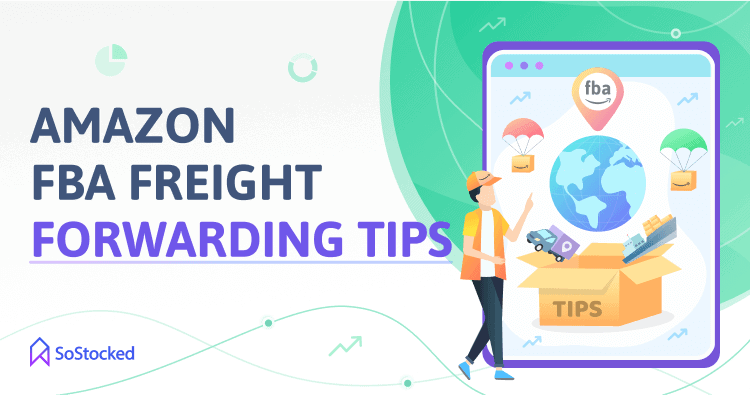
Amazon FBA Freight Forwarder Tips to Avoid Stockouts and Reduce Costs
Sound Strategies for Improving Your Logistics
Struggling with keeping top sellers in stock due to shipping delays and increasing freight costs?
Many sellers are currently facing supply chain constraints brought upon by the pandemic. Labor disruptions due to lockdowns, pent-up demand, insufficient staff to transport shipments from US ports to fulfillment centers, and shortages in containers, trucking and pallets are making it more expensive and difficult to ship inventory from China and other parts of the world.
Aside from sellers, Amazon is also starting to feel the effects of these supply chain constraints. Some sellers have reported receiving a significant drop in their restock limits last week despite good sales, which we think is Amazon’s way to alleviate warehouse congestion and speed up inventory check-ins before the holiday season.
But the fact that Amazon is also dealing with these supply chain constraints during this critical time of year makes finding alternative options all the more important. For example, having a backup plan could help you avoid shipping delays, stockouts, and express air shipping.
Keep reading to learn about freight forwarding tips you can use to make your business more flexible amidst COVID, shipping fiascos, and the holiday rush.
In this Amazon FBA Freight Forwarder guide, we’ll take a look at:
8 Supply Chain Strategies for Avoiding Stockouts
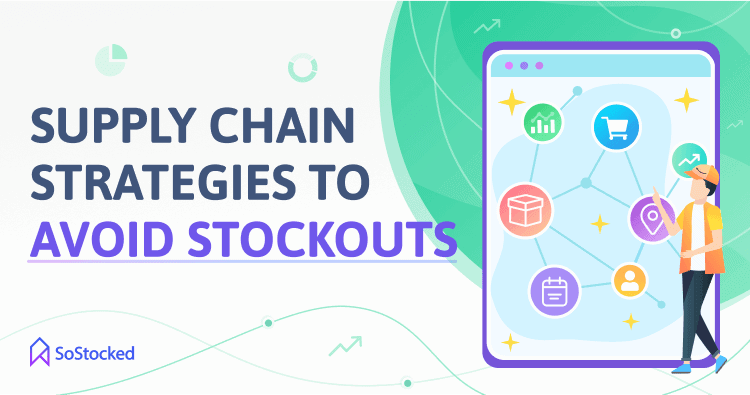
Partner with a 3PL
With increasing storage restrictions, it can be easy to max out your Amazon inventory capacity overnight. When that happens, shipments get canceled or returned. If you don’t have a backup 3PL warehouse to divert the cancelled shipments and to drip feed inventory into Amazon, you run the risk of stocking out on your best sellers and further damaging your restock limits.
Partnering with a 3PL will help you stay in stock and flexible during these chaotic times. It’ll also give you some peace of mind knowing that whenever you can’t send more products into FBA, you can simply re-route your shipments to your backup warehouse.
If you find you’re unable to send in more inventory, work on your FBA utilization percentage and sell-through, as these are two of the main influencing factors that Amazon uses to determine whether or not you’re eligible for a restock limit increase. To improve your utilization, try to put slow-moving products on sale, fix stranded inventory, and manage your reserved inventory level.
Once your FBA utilization goes back within range, and you’re allowed to create new shipping plans again, start sending some inventory from your backup warehouse into FBA. However, I don’t recommend shipping large volumes of that inventory to Amazon straight away because it’ll work against your current utilization percentage. Drip feed into Amazon and gradually ramp up sales again until you get your restock limits back to normal.
Related: 3PL Logistics Backup for Amazon
Create a Strategic Backup Reserve at Your 3PL
Aside from using 3PL as your backup warehouse for canceled or returned shipments, you can also use it for storing some of your buffer stock.
Many sellers send all of their shipments Less than Truckload (LTL) from warehouse to FBA. But what if Amazon fails to check it in on time? Amazon may neglect your inventory for reasons such as overloaded warehouses. Your inventory could sit to the side, waiting to be checked in for weeks. This is why you should hold back some at your third-party warehouse as a safety stock.
Send a smaller amount of inventory into FBA using a method often known as Small Parcel Deliver (SPD) to check in much faster than LTL. While more expensive, SPD is a faster option as loose cartons tend to go through the receiving process faster than LTL.
Hold Back Some Inventory with Your Supplier
Imagine putting all your newly manufactured products on ocean freight, and another Suez Canal disaster happens. Your products will end up stuck at sea or at port for weeks, which puts you at risk of stocking out.
Having a contingency plan for shipping your inventory from overseas to your destination ports and from the ports to Amazon will help minimize the impact of shipping delays caused by maritime incidents and log jams.
Consider holding back some inventory reserves with your supplier that you can quickly ship by air in the event of emergencies. Not only will this prevent stockouts but also avoiding too many expensive express air transports, as it is only there if you need it. You won’t air ship it if your ocean inventory arrives without incident and will simply put in on the next boat when needed.
Use a Third-Party Fulfillment Center
Team up with a third-party fulfillment center so you can quickly switch to FBM whenever necessary. This becomes extremely helpful when Amazon restock limits prevent you from sending enough inventory into FBA. A backup fulfillment center will process, pack, and ship orders directly to your customers, sparing you the cost and headache of putting together an in-house team on short notice.
The profit margins may be slimmer with FBM than FBA. Still, it allows your business to stay operational during tricky situations. For instance, if you’re at the edge of your max inventory limit, you wouldn’t want to risk sending any more stock into FBA as Amazon will only reject it. On the other hand, not keeping your best sellers in stock can also cause significant damage to your business. This is where third-party fulfillment centers come in.
Instead of putting your business on pause, you could use your backup fulfillment center to ship orders from there. Plus, Amazon counts FBM sales toward your sales velocity, which boosts your sell-through. Therefore, selling through FBM may help improve your restock limits and avoid prolonged stockout periods.
Pro tip: If you want to switch to FBM but don’t have the warehouse space and resources to pack and ship orders yourself, all the more reason why you need to use a third-party fulfillment center. Ask other sellers you trust for recommendations to more quickly find a reputable one. You don’t want to start looking for a fulfillment center during Q4 or when supply chain constraints have gone from bad to worse, as most warehouses will likely have been fully booked by this time.
Manage Your Lead Times Properly
Lead time management is one of the most important aspects of inventory management. It can make or break any FBA business if not managed properly.
We know for a fact that sellers often don’t have much say over their lead times. Production and shipping conditions are set by suppliers, so things can take as long as they can. Not to mention, there are other considerations that may affect your lead times as well, such as:
- Clearance delay (shipment is held up at customs)
- Reordering delay (time taken to accept and process orders)
- Communication issues with your supplier
- Maritime accidents and natural disasters
- Blackout Dates
That’s why I can’t emphasize the importance of planning properly enough. When planning your inventory, make sure to compute your lead time and factor it into your forecast calculations for improved accuracy.
Calculating your lead time will help you determine how long your lead time should be. Here’s how to calculate it:
Production Time + Shipping Time = Lead Time
– Or –
Production Time + Shipping Time + Check-in Time = Lead Time
Once you’ve figured out your lead time, try to compare it with the average lead time of your supplier based on previous purchase orders.
If your current lead time is longer than what has been the lead time on prior orders, figure out why and if there are ways to shorten it.
Note: Designing your lead times only for “best case scenario” is not advisable. Planning on things going perfectly, especially in today’s supply chain climate, without taking into consideration things that could go wrong and cause your lead times to increase could cause you to stock out or spend money trying to fix emergency situations.
Managing Longer Lead Times
If your lead time is longer because raw materials take longer to procure, you may be able to order more raw materials in advance or you may be able to rework your payment structure. This way, you are paying for more inventory up front and lengthening out the payment terms.
For example, paying for 4 months’ worth of inventory with 30% down payment, and then doing 2 shipments and only paying the remaining 70% payment on the shipment you are sending out. This strategy allows for a better flow of cash while reserving inventory already produced and ready to ship from your supplier to your marketplace.
Long lead times may also play a part in prolonging any stockout period you may find yourself in. If you get a sudden sales spike and sell out earlier than expected, a longer lead time can keep you from replenishing your inventory ASAP. Consequently, you could lose your customers to competitors, and your rankings and restock limits could take a hit.
The trick is to have some buffer stock for unexpected sales spikes and even shipping delays. Setting aside some extra units will keep your products in stock and help you prevent a stockout situation.
Aside from buffer stock, it’s also best to create a backup logistics plan, such as splitting your shipments between ocean and air freight or LTL and SPD to Amazon to remain flexible no matter what happens in your business.
Pro tip: Both Less than Truckload (LTL) and Small Parcel Delivery (SPD) are ideal for shipping smaller quantities of inventory depending on whether speed or cost is more important to you at the time. Small Parcel Delivery means that you are not putting your inventory on pallets but shipping in individual boxes/cartons. This method may be more expensive, but items packaged in loose cartons are faster to check in because they’re easier to handle and transport. Alternatively, opt for Less Than Truckload (LTL) if you have larger packages (that weigh at least 150lbs) or need to combine individual boxes on pallets for shipping.
Take Advantage of SoStocked’s Express Lead Time and Split Shipment Features
If you sell out faster than average due to sudden sales spikes, you can use our software’s Express Lead Time tool to help you determine how much inventory you may need to send by Express Shipping to avoid a stockout. This way, you can avoid sending more than is needed. Taking advantage of express shipping, while costly, could help you to stay in stock during such emergencies.
Another excellent software feature of SoStocked is Split Shipment. You can split any purchase order into several shipments. For example, you could ship half of your newly manufactured inventory by ocean and another half by air to ensure everything arrives on time while reducing shipping costs.
My favorite variation of split shipment freight forwarding is directly in line with my golden rule of logistics: Don’t let anyone have all your stuff. The safest approach to inventory management is to hedge your bets and plan for anything.
A couple of examples:
- Don’t put everything on a boat and cross your fingers that it will make it to the other side on time. Instead, send most by sea but reserve enough inventory with your supplier that you can hold some back to send by air only if you need to.
If you don’t you can always send it in the next ocean shipment, but this allows you to avoid incurring air freight costs if possible while not stocking out because you failed to prepare. This, of course, will require that you potentially are producing more inventory upfront to hold onto as this extra safety stock. - Many sellers I talk to run out of stock because they send everything to Amazon LTL (Less Than Truckload) from their warehouses. Then, when Amazon takes 3-6 weeks to actually check in that inventory, they stock out with no recourse as Amazon is essentially holding their only available stock hostage.
Similar to the first example, instead of sending everything LTL, reserve additional inventory at your 3PL to send Small Parcel Delivery (SPD). SPD generally checks in within 3-7 days versus the, sometimes, many weeks LTL can take.
Utilizing these strategies can make the difference between staying in stock or not. In today’s world, you always need to have a plan B and a plan C for your plan B.
Related: Lead Time In Inventory Management For Amazon Sellers
Get Things Checked-In Faster
With widespread trucking and container shortages, how do you avoid check-in delays? Consider skipping Amazon Partner Carrier and going with a third party trucking company. The cost is often more expensive but can tend to be a faster check-in process.
Part of how using non-Amazon Partner Carrier trucking speeds up check-in is that these companies are not part of the Amazon Freight eco-system and so are able to set appointments and truck in inventory on their own timeline.
Of course, you’d think Amazon Partner Carrier shipping would have the advantage and it may be that they can get faster appointment times but what happens in times of heavy shipping, such as Q4 or Prime Day, can make check-in times a nightmare even if delivery times are favored.
Here’s why:
Amazon now has a program called Amazon Freight. It’s pretty smart, until it isn’t and in times of congestion, when it isn’t, it really isn’t.
It breaks down like this. Amazon now owns hundreds of trucking trailers. So truckers and trucking companies can partner with Amazon using their trailers. These truckers use Amazon’s trailers to transport goods to FBA. They drop off the trailer in Amazon’s lot so they don’t have to wait for an open dock and FBA employees can unload these trailers at more convenient times.
The trucker then picks up an empty Amazon Freight trailer that has previously been unloaded. It’s a great plan. Amazon controls the flow more efficiently due to controlling the trailers and unloading times.
But here’s where it goes wrong.
What happens when more trailers are coming in than are being unloaded? You guessed it. Suddenly truckers are dropping full trailers and leaving with no trailers. Unloaded trailers start piling up, adding to the trailer shortage problems we already face.
This is why using trucking companies connected to Amazon Freight start to become a worse option in congested times. They drop your inventory and it sits in a trailer for a prolonged period of time.
There are other third party trucking companies, such as TForce Freight, previously UPS Freight, which seems to be faster and more streamlined than these partner carriers in terms of check-ins because they don’t have this trailer drop-off agreement.
These companies will not leave their trailers at Amazon, meaning the pallets will get unloaded from the trailers when loading docks are available. This may make it take longer to get an appointment but having your inventory sitting at Amazon but not checked in doesn’t serve you, does it? In the end, what you really care about is net speed to check-in and inventory actually available to sell on Amazon.
Knowing how trucking is operating these days helps you to make smart decisions about the fastest ways to get your inventory checked in. Check with your 3PLs to ensure they are using the best and fastest modes of ground freight to keep you in stock.
Consider Sending Smaller Shipments More Frequently
Sending in shipments twice a month may be costly, but it will help improve your utilization and sell-through. And these two, as mentioned earlier, are what currently matter most to Amazon when it comes to giving sellers restock limit increases.
Splitting your three months’ worth of inventory into smaller shipments prevents you from maxing out your storage space quickly and improves your turnover ratio. The quicker you turn that inventory over, the better, as it implies excellent inventory management efficiency and performance.
If you decide to follow this tip, make sure to automate this repetitive task to avoid ordering and transferring your inventory too late. It’s easy to get overwhelmed when you’re already likely facing so many other challenges running your business day to day, so consider leveraging an inventory management software to stay on top of things.
In SoStocked, you can set your Min/Max Stock levels (in units or in days) and automate your reordering process. I recommend calculating your Min/Max in days to account for fluctuations in your sales velocity, especially for seasonal products.
Pro tip: To get your smaller shipments checked in faster, consider sending them SPD. It’ll take Amazon less time and effort to process them.
3 Tips to Reduce Shipping Costs
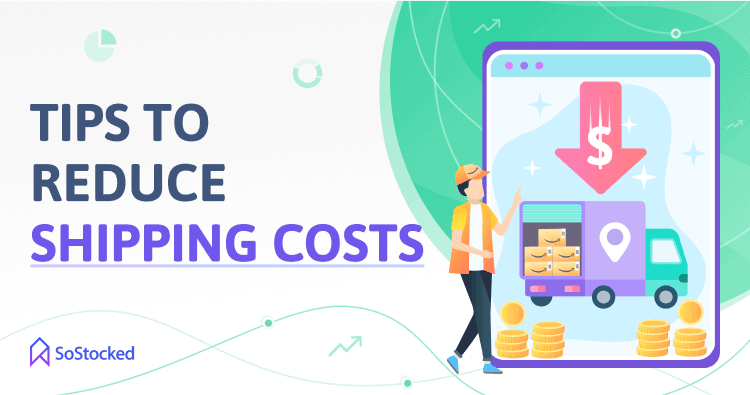
With everything going up lately, from labeling and packaging to labor and shipping, it’s only wise to think of ways to cut costs to keep your products competitively priced. Here are some ideas:
Review Your 3PL’s Rates
If you’re using a 3PL warehouse, now is the time to review your warehouse fee structure and see the cost breakdown. You’d be surprised to learn about the price difference between warehousing a carton with 50 units and a carton with only 6 units in it. Which one do you think is more expensive?
Well, it depends upon the fees involved. Storage fees may be higher to store the product holding only 6 units per carton if it is a larger product, but processing fees can add up quickly, cutting deeply into your profits, something you may not have factored into your margin calculations.
Let’s use this quote I received last year as an example:
Carton Labeling $1.75/carton
- 50 units/carton = $0.035/unit
- 6 units/carton = $0.29/unit
Carton Pull $1.85/carton
- 50 units/carton = $0.037/unit
- 6 units/carton = $0.31/unit
Labor $40/hour
- 50 cartons = $0.80/carton
- 50 units/carton = $0.016/unit
- 6 units/carton = $0.13/unit
Total in processing fees:
- 50 units/carton = $0.088/unit or $4.40 total
- 6 units/carton = $0.73/unit or $4.38 total
If you look at the total, a carton holding 50 units is only $0.02 more expensive than a 6-unit carton. You’d probably think that it’s more cost-effective to use a 6-unit carton for shipping your inventory from warehouse to Amazon, but factor in the size or shape of your items, then you might have a different answer. A 6-unit carton is most likely ideal for bulkier products, while its 50-unit counterpart is perfect for smaller and lighter items.
When you start breaking things down, it makes more sense to be able to optimize your units per carton where possible. Work with your supplier, inspection company, and Amazon freight forwarder to help to optimize this, so that it increases your cost efficiency while being packed well enough to prevent shipping damages and still meets Amazon, customs and your freight forwarders shipping requirements. Carton optimization is a balancing act but finding that sweet spot could save you a lot of money long term.
In further review of your warehouse fee structure, ask your 3PL whether their labor charges are broken down into increments of time or if they roll up to 1 hour minimums. By this, I mean, if it only takes 12 minutes to process a shipment out of their warehouse, are they charging you $40/hr in 15 minute increments or will you pay the whole $40 for that 12 minutes of time?
How labor is charged at your warehouse makes a huge difference in processing costs.
If you have 5 cartons shipped out and it takes 12 minutes to handle those 5 cartons, depending on the warehouse, you could either be paying:
$10 for that labor which would be $2 per carton, or $40 which would be $8 per carton. For 6-unit cartons that is either $0.33/unit or $1.33/unit. You can see how these costs can really start to add up.
So, check with your supply chain service providers and figure out the best ways to keep costs down. A fair, honest and intelligent company will want to help you to keep your costs down as they would understand that they only do well if their clients do well. It’s only fair to pay for work that’s actually being done and your relationships with your providers should be like partnerships. The money you save goes into expansion and that expansion benefits them too. If you can’t reach a resolution, find another warehouse that offers a more fair fee structure and sees you as a partner in growth and expansion.
Related: Warehouses & Fulfillment Centers: How to Avoid Getting Screwed?
Floor-Loaded vs Pallets
Floor-loaded and pallets are two loading styles that Amazon freight forwarders use for shipping your cargo from the place of origin to final destination.
Standard practice is floor-loaded containers (FCL or LCL, i.e. container splitting or sharing) then offloading the containers at your 3PL warehouse and palletizing them before sending them via LTL freight to Amazon. But the difference in loading styles could increase shipping costs.
For instance, floor-loading your goods from overseas to the US can reduce freight costs since it allows you to fill an entire container (floor to ceiling) with your products and not use pallets, which is also why proper floor loading is important.
Pallets, however, are bulky and heavy and take up precious space, making them more costly to ship. That’s why palletizing is mostly done in the country of destination, e.g., 3PL warehouse, to keep costs down. In other words, pallets are ideal for transporting goods within short distances like from 3PL to FBA. Plus, Amazon requires boxes weighing more than 50lbs each to be palletized so that their warehouse staff can easily forklift them. It is a good idea, though, to keep boxes below 50lbs as additional handling fees often apply over that weight.
But there are cases when palletizing your cartons in China is necessary. For example, extremely fragile items, such as ceramics and glass, need to be palletized in their country of origin to ensure they arrive at the final destination in one piece – literally.
Do be sure to factor into your calculations that warehouses generally charge a pallet breakdown fee for taking the items out of your palletized cartons. Thus, that could also take a bite out of your shipping budget.
Overall, floor loading is often used for shipping cargo from overseas to the US, while palletizing is generally the standard for sending inventory from your warehouse to FBA. Only palletize your products in China if they’re extremely fragile for added support and stability during transport.
Pro tip: IAs discussed earlier, it is advisable to reserve some loose cartons unpalletized to send SPD (small parcel delivery) to Amazon FBA if needed.
Full Container Load (FCL) or Less than Container Load (LCL)
When shipping via ocean freight, importers are typically charged based on the following:
- FCL – So long as you pay the price, anyone can ship their cargo using FCL, irrespective of the volume. To save some money, though, it’s best to use this method if your total cargo load weighs 15 cubic meters (13 tons) or more since you’ll be paying for the whole container at bulk rates and not per cubic meter, which is common in LCL.
- LCL – This shipping arrangement is ideal for cargo that weighs less than one cubic meter (CBM). It can be cheaper than FCL if you keep your cargo weight below 15 cubic meter since the minimum chargeable volume for LCL is one cubic meter. So, the heavier your load is, the more expensive LCL gets. In that case, at some point as your load increases, FCL becomes a better option. Be sure to check with your freight forwarder for the rates of both FCL and LCL and compare the transit time, freight cost, and the other fees that might incur during the transport.
Ocean Freight Cost Estimate Sample
FCL
FCL is usually offered at lump sum rates, i.e.,. 20′ container = $2,000 or 40′ container = $4,000.
Aside from container size, your FCL cost also depends on other factors like quantity of cargo, origin port, destination port, time of year, and so on.
LCL
LCL cost can be calculated based on weight (usually per 1,000 kgs or 1 CBM, whichever is greater).
Formula to get your LCL shipment weight:
Length x Width x Height in centimeters = Shipment Weight in CBM
Often there is a minimum billable weight, meaning that anything under the minimum weight will be billed as if it was the minimum weight. So, if the minimum weight is 5 CBM but the actual weight is 3.2 CBM, you will still need to pay at the price as if it weighed 5 CBM.
Example
- Dimensions of each carton is 60 x 55 x 70 cm. You have 10 cartons.
- The shipment’s volumetric weight is (60 x 55 x 70) x 10 = 2,310,000/1,000,000 = 2.31 CBM
- Since 2.31 CBM > 5 CBM, the shipment cost will be calculated on the billable weight of 5 CBM.
If your ocean cargo rate is $40 per CBM, then your shipping cost would be:
Billable weight x Rate per CBM = Shipping Cost or 5 CBM x $40 = 200
Pro tip: Consider container optimization to ensure you are getting the most out of every square inch of your container. For example, minimize the packaging space in your product packaging, carton packaging and within the configuration of your container as well. Reduce wasted space by squeezing items that can be compressed to reduce your cargo’s volume-weight ratio and lower your shipping costs.
Improve Inventory Tracking with SoStocked
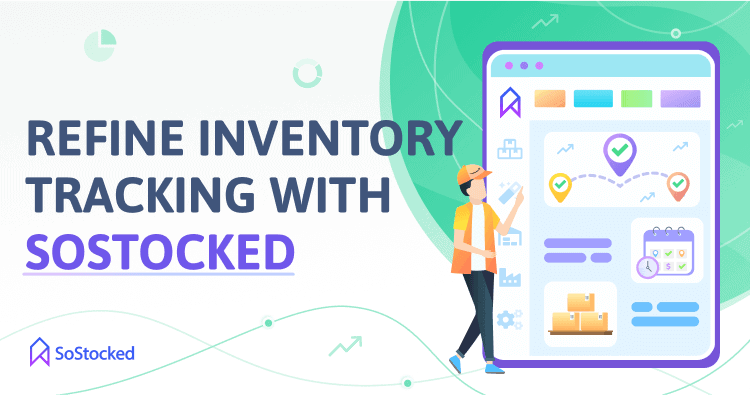
As sellers, we’re also responsible for the safe and timely delivery of our FBA inventory. So, you want to make sure you keep an eye on your cargo as it moves through each stage of the supply chain. This way, you can detect supply chain problems early and resolve them with your Amazon FBA freight forwarder.
Here are some tools that you might find helpful when shipping to Amazon FBA.
Built-in Order Tracker
In SoStocked, you can track purchase orders from the moment your supplier receives them, through shipping to arrival at their final destination. Our software’s built-in order tracker tells you:
- What’s in production
- What’s en route
- How the inventory will arrive: by sea, air, or ground
- What’s arriving at our warehouses or prep centers
- Where the inventory is headed: 3rd-party warehouse or Amazon FBA
- Estimated shipping date or time of arrival
Inventory Tracking Dashboards
Stay on top of your inbound shipments by using the “Landing in 30 Days” and “Arrived 15 Days Ago” inventory tracking dashboards. These dashboards show all data on cargo scheduled to arrive in your marketplace country in the next 30 days or those that have arrived within the past two weeks.
Lead Time Management Tools
Assign a default lead time to each of your suppliers along with the optional ability to assign an express lead time to determine if any express shipping is needed and to calculate how much inventory will be needed to be sent express. When you set up a supplier lead time, SoStocked applies the same lead time to each of the products from that supplier automatically. You can also override these settings to customize lead time per product if necessary. You can also customize separate lead times per supplier or per product for each marketplace.
Plan for Blackout Dates
Avoid errors in calculation when you are unable to ship inventory during national holidays such as Chinese New Year by calculating Blackout Dates into your forecast data. Use our Blackout Days Calendar for some guidance on which dates you should plan around for more accurate forecasting timelines.
Bonus: Join my Inventory Secrets Webinar to learn more about the latest storage-type inventory strategies!
Increase Flexibility to Survive Supply Chain Constraints
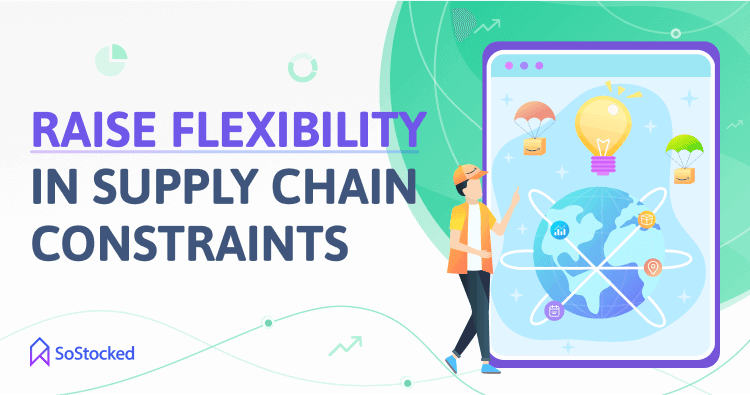
The importance of flexibility in this industry cannot be overstated, especially now. Whether that means switching to FBM, increasing product prices, or investing in innovative software, smart FBA sellers are starting to embrace flexibility to overcome worsening supply chain issues.
Weather these challenges by being prepared for them when they occur. Suffered a massive decrease in your restock limits despite solid sales? Work on your utilization and sell-through and adopt off-Amazon third-party fulfillment operations.
Finally, if the increasing freight costs and container, pallet and trucking shortages have limited your ability to market and sell full-throttle, consider adjusting your logistics operations. Negotiating better terms with your supplier or freight forwarder can make a huge difference in your cash flow and allow you to pivot your shipping methods and strategies to help you to stay in stock. Or, perhaps reassessing your warehousing fees and optimizing your cartons, pallets or containers could reduce mounting costs.
Re-evaluate your entire logistics workflow to prepare for anything which might affect your ability to get product into the hands of your customers at a reasonable profit margin.
The smart sellers are doing this now, which will pay dividends against those that will stock out too often, leaving them wide open to lost rankings and market share. With smart inventory strategies and the tools to keep watch over them, you can not just weather the storms of recent supply chain chaos but could actually dominate amidst them.
Need more information?
- Send Message: We typically reply within 2 hours during office hours.
- Schedule Demo: Dive deeper into the nuances of our software with Chelsea.
- Join Live Upcoming Webinar: New to Amazon inventory management? Learn three inventory techniques you can implement right away.
 Start Your Free Audit
Start Your Free Audit